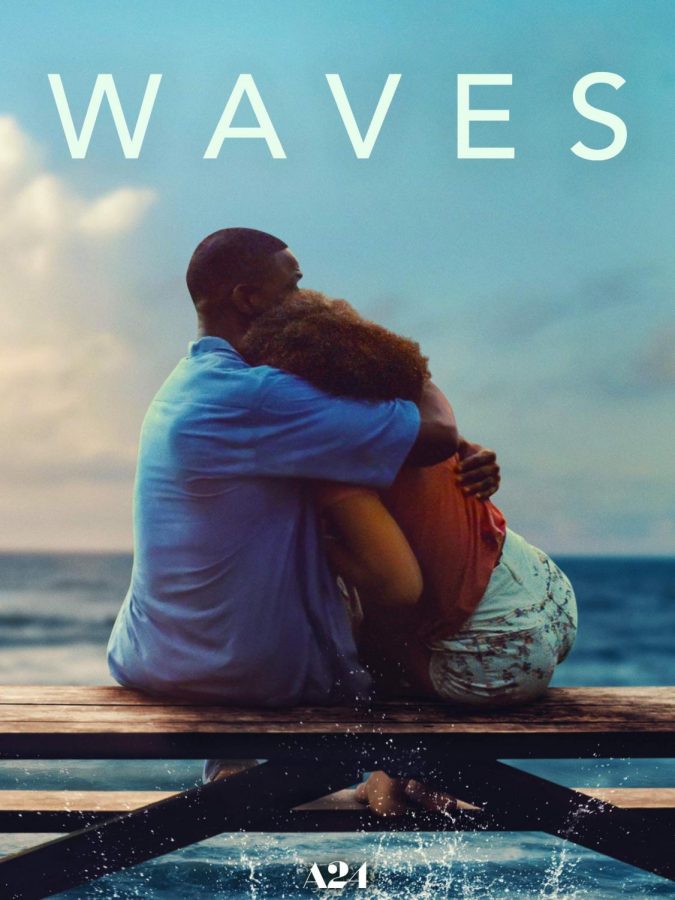I don’t believe in spoilers. I think if a movie is any good, it should hold up even if you know what’s going to happen. If an entire movie’s plot hinges around “gotcha!” twists, how can it be good on the second watch? So, I don’t believe in spoilers. Or, I didn’t believe in spoilers, and then I saw “Waves.”
By some miracle, I went into “Waves” knowing nothing about its plot. Within the film’s first 30 minutes, I was pleasantly surprised by its stylistic choices: the film opens on a fast-paced, quickly-cut, camera spinning, song-heavy montage, a style kept throughout the entirety of the film. As is typical of most A24 films, “Waves” is also shot on film (or at least looks it) and has not one, not two, but five artsy aspect ratios that it cycles through.
Plotwise, though, these first 30 minutes coasted by on Lifetime movie cliches, and I spent my time joylessly predicting some of the upcoming major plot points. Of course, the wrestler’s shoulder injury turns out to be worse than he thought. Of course, he takes painkillers, drinks, and smokes weed. Of course, his girlfriend gets pregnant. Of course, all his hopes and dreams are gone forever. I, with incalculable hubris, thought I had beaten the film at its own game as I watched my predictions come true one by one until I had nothing left to predict. But, there were still three-quarters of a movie left to watch.

“Wave”’s cinematographer Drew Daniels has collaborated with director Trey Edward Shults on all three of his films.
The masterful directing that turns these initial scenes from melodrama into drama (and sometimes even into genuine, stomach-churning horror) cranks up the film’s overall tension at a snail’s pace. As the scenes progress, there’s always some unquantifiable feeling that everything is going wrong—even when, at most, two or three things are going wrong.
As “Waves” reached its halfway point, I was talking to my screen the way some people do for Paranormal Activity movies, saying “No, don’t go there!” and “Don’t do that!” I initially expected a low-key drama rife with quiet dinner scenes and crying, but “Waves” surprised me by consistently breaking its own rules. It managed to keep one-upping itself until, at the end of a harrowing party scene, it could go no further.
But there’s still half of a movie left to watch, so “Waves” goes on. The second half of the film focuses on another character, and, although it chronologically serves as a “continuation” of the first half, its plot is mostly separate. Tonally, too, it differentiates itself; it’s determined to be more somber, more thoughtful, and more freeing. In a sense, both halves of “Waves” serve to replicate real life. One focuses on the ways ordinary people can do awful things. The other focuses on how the human experience, while frequently monotonous, is nevertheless worthwhile.

“Waves” is very dialogue-heavy, but no conversation ever feels drawn-out or unnatural. The flow of dialogue can be whatever it needs to be: dynamic, endearing, or sharp.
In the continued interest of realism, “Waves” also shies away from investigating its own themes. Forgiveness, race, gender, love, family, religion, class, the internet; all of these motifs are given an occasional spotlight, but there are no grand speeches, no “Life is about…” or “You should always…” It’s an approach that I’m grateful for because I don’t think “Waves” is a film that should be dissected. Investigating “Waves” would be like writing a literary analysis of going to Denny’s or considering the symbolism behind the designs of tree bark. Life has no intended meaning, and neither does Waves.
Via its maximalist editing, its fluid camerawork, its loud, constant soundtrack, and its myriad other tricks, “Waves” takes the viewer away from their comfort zone and submerges them in a story that’s so fully realized it feels real. It’s the scariest movie I’ve ever seen, the saddest, and the most intriguing. It’s also the best movie I’ve ever seen, so I would recommend taking two hours out of your schedule and watching it some time (it’s available to buy/rent on a few streaming platforms). Whatever you do, just make sure not to look up spoilers.









